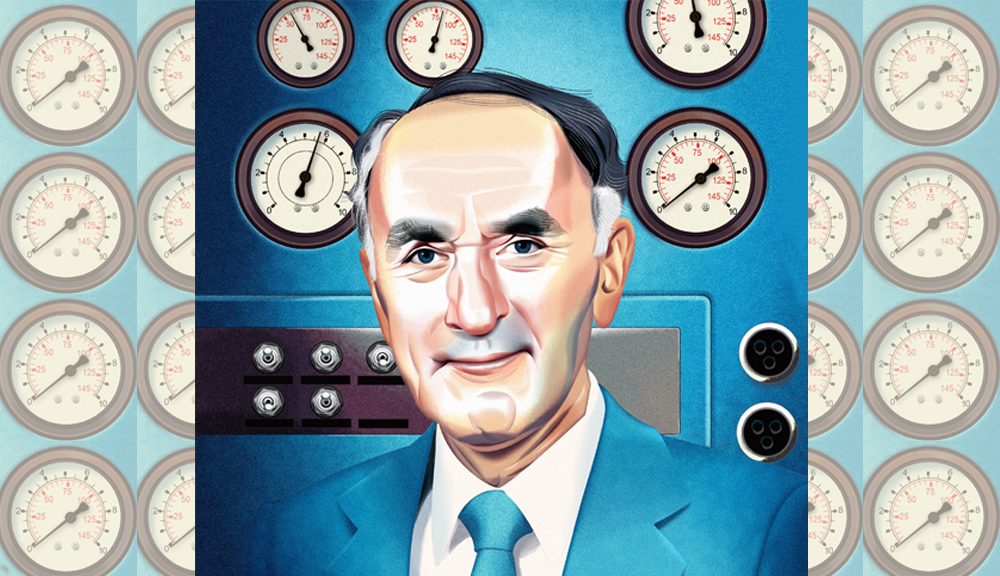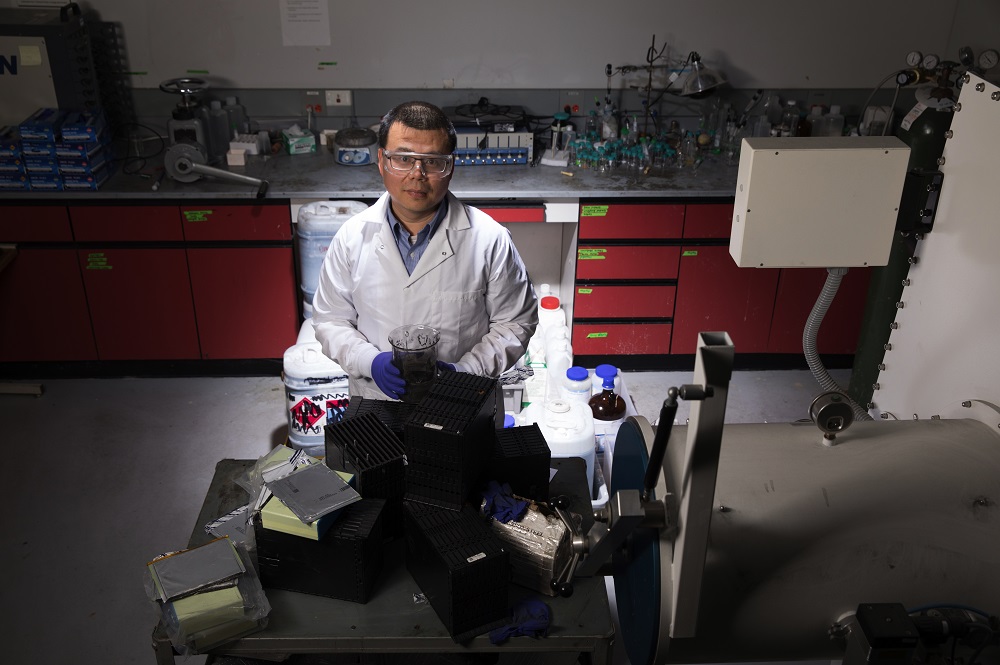Robert C. Stempel, WPI Class of 1955, an emeritus trustee of WPI best known as a consummate automotive engineer who went on to lead the world's largest car company, died May 9, 2011, at the age of 77.
In a career spanning more than five decades, Stempel played a central role in a long list of automotive innovations, including General Motors' first modern front-wheel-drive car, the catalytic converter, the GM Sunraycer, an experimental solar-powered car, and the EV-1, GM's first all-electric vehicle. For the past two decades, he devoted his energies to helping develop innovative battery and solar technology.
A self-described "car guy," Stempel had a lifelong fascination with the automobile. Growing up in New Jersey, he worked in a garage to earn money for college. While pursuing his BS in mechanical engineering at WPI, he kept a tool box in the trunk of his car and often did repair work for fellow students. As a senior, he earned the Worcester Chapter of the American Society of Mechanical Engineers Award for a paper titled "Practical Fuel Injection for Automobiles."
After graduation, he worked briefly at General Electric and served in the U.S. Army Corps of Engineers, but his real goal was to land a job at GM. "Car makers were styling up the 1950s body shape, which was reminiscent of the glory times, and I saw that," he told WPI's alumni magazine, Transformations, in 2002. "I was deeply interested in teamwork-based engineering. It cemented things for me. I belonged in the automobile industry. I wanted to go to Detroit."
He succeeded in 1958, starting out as a design engineer in the Oldsmobile chassis department. He failed at his first assignment, designing part of a wheel assembly, but went on to develop the front suspension and transmission for the 1966 Toronado, GM's first post-war front-wheel-drive car. After earning an MBA at Michigan State University in 1973, Stempel was appointed assistant to GM's president and assigned to lead a team charged with developing new technology to help GM meet strict new air pollution laws.
The result was the first practical catalytic converter for production automobiles. Building on earlier work on catalytic converters and catalysts by other engineers, the GM team developed a number of key innovations, including special stainless steels and baffles, which enabled the devices to work in the harsh environment of an automotive exhaust system and to remain functional over a vehicle's lifetime. The company also worked with refiners to develop gasoline blends formulated without lead, which would foul the catalysts. Stempel also participated in the development of the positive crankcase valve (PCV), another key pollution control device.
Stempel went on to hold key positions in several GM divisions, including director of engineering for Chevrolet, vice president and general manager of Chevrolet and Pontiac, and executive vice president of the overseas and truck operations. In 1987 he was named GM's president, becoming the youngest person to hold that job in more than 30 years. The appointment was announced the day before he was to deliver the address at WPI's 119th Commencement exercises. In fact, his address marked his first public appearance as GM president, and the local and national media filed down to Higgins House for a post-ceremony news conference.
Three years later, at the age of 57, Stempel was elected chairman and CEO of GM, then the world's largest manufacturing enterprise. The promotion came during a major recession and at a time of unprecedented challenges for the global corporation. Stempel soon found himself faced with the need to close 231 assembly plants and cut 74,000 jobs, reducing GM to about half of its 1985 size. These and other moves aimed at making the company leaner and better able to compete with foreign car makers failed to turn GM's fortunes around quickly enough for an impatient board of directors, which asked him to step down in 1992.
While chairman, Stempel continued to indulge his love of innovative engineering and he pushed GM in new directions that anticipated the age of electric and hybrid vehicles. He supervised the development of the Sunraycer, a sleek, lightweight vehicle powered by 8,800 solar cells. Developed to compete in the 2,000-mile, cross-Australia World Solar Challenge, the experimental car won the race and convinced Stempel that electric power would play an important role in future vehicles. He encouraged GM engineers to develop the Impact electric concept car, which led to the EV-1, the first modern mass-produced battery-powered vehicle.
After leaving GM, Stempel fielded a number of offers from within the automotive industry and at universities, but decided to continue to focus on electric vehicles. He joined Energy Conversion Devices (ECD) in Troy, Mich. Founded by inventor Stan Ovshinsky, the small firm was developing innovative, high-energy, and environmentally friendly metal hydride batteries for electric and hybrid vehicles. Stempel eventually became the company's chairman and CEO. "Having spent a great deal of my time on emissions and pollution reduction or elimination, a second career with ECD is right in line with my own views on the environment and clean air and water," Stempel told Transformations.
In 2007, Stempel and Ovshinsky left ECD to found Ovshinsky Innovations, which continues to work on light, affordable solar roof panels. "He was the best damn engineer I ever met," Ovsahinsky told USA Today after Stempel's death.
Stempel received numerous honors for his engineering and industry accomplishments, including election to the National Academy of Engineering and as a life fellow in the American Society of Mechanical Engineers (ASME). He also received the Golden Omega Award, given jointly by the Institute of Electrical and Electronics Engineers, the National Electrical Manufacturers Association, and the Electrical Manufacturing & Coil Winding Association, and ASME's Soichiro Honda Medal, which recognizes significant engineering contributions in the field of personal transportation.
An active member of the WPI Board of Trustee from 1979 to 1994, Stempel received the WPI Alumni Association's Robert H. Goddard Award for Outstanding Professional Achievement and an honorary doctorate in engineering.


